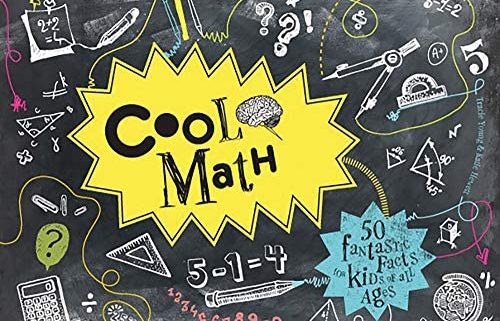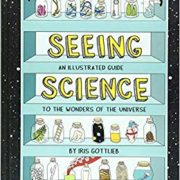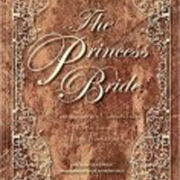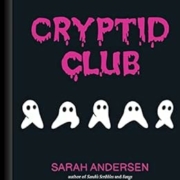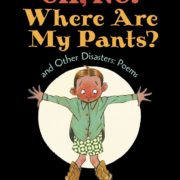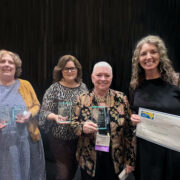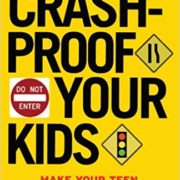Cool Math: 50 Fantastic Facts for Kids of All Ages by Tracie Young and Katie Hewett
Let’s face it, for some of us, “math” can be a four-letter word. Math anxiety is all too real for folks in and out of school alike. (For example, some frequent results for a recent Google search for the term “math anxiety” were “Why is math making me cry?” and “What is math trauma?”) I don’t know all the reasons why math generates anxiety, but I can tell you that it does for a whole lot of us and that a lot of us are looking for help in that realm. Math study guides–especially those covering algebra–are one of the most sought-after subjects in the teen non-fiction collection. Anything that explains a complicated subject clearly (What–numbers and letters together in an equation?!) or that can help the concept to click is huge.
Cool Math: 50 Fantastic Facts for Kids of All Ages by Tracie Young and Katie Hewett arrived in the teen non-fiction collection this summer and sat with algebra study guides towering over it until, one day, it made its way to a back-to-school display. That’s when I spent some extra time with the small, handy title. It’s a perfect size to pop in a backpack and presents a low-stakes approach to math through 50 appealing mini-lessons.
Right from the cover, Cool Math puts out a casual, engaging vibe to counteract anxiety or stereotypical assumptions of stuffiness about the topic. The book begins with a “Great Moments in Math” section introducing fun facts of math history and a quote from American mathematician, Stan Gudder, “The essence of mathematics is not to make simple things complicated, but to make complicated things simple.” (A point met with skepticism by plenty of us math anxious folks.)
Yet the book delivers on this premise. Each fact is offered clearly and concisely over a two-page spread. Backgrounds resemble graph paper, chalkboard, etc., and additional material appears in eye-catching, highlighted shapes. The pleasant, orderly layout adds to the laid-back approach. Each spread provides a student-friendly explanation of the topic, walks the reader through the process of approaching the solution, shows how to arrive at the answer, and adds interesting trivia. The spreads start with a title tailored to the concept presented (sometimes clever, sometimes veering into dad-joke territory). Concept illustrations are made to look like notebook doodles which adds to the book’s liveliness without schmearing it in a layer of cheesiness.
The 50 facts offer a range of information despite the book’s size. Concepts covered include binomials, triangles, multiplication, probability, estimation, fractions, averages, calculations (recipe conversions, temperature conversions, tips)–plenty of practical knowledge with real-world applications. Cool Math’s content is great–realistic, applicable, and not overshadowed by the book’s design. The layout reflects the relaxed, encouraging vibe of the book without trying too hard. There’s no outdated photography or completely cringe-worthy text which is all too present in non-fiction written for teens. Give Cool Math to upper elementary and secondary students. It’s full of helpful bits for middle school and high school students in search of understanding of very specific concepts yet appealing to upper elementary and lower middle school students with an interest in math and could even prove a pleasant surprise to those without. (Where was this when I was about to start algebra?!)
Give Cool Math a try. It’s engaging, interesting, appealing, and portable–even fun in places. It’s math that won’t make you cry. You can find this title and algebra study guides and so much more at the Joplin Public Library where there’s something for everyone!

